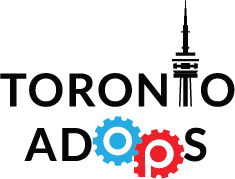By: Yuli Shumsky
People often ask us to explain this Programmatic Deal ID or Private Marketplace stuff: What it is, how it works, and what should one expect as far as CPM rates go?
So here is the Deal ID 101.
The general premise of a DEAL ID is to skip the exchanges.With DEAL ID your buying platform (DSP) plugs directly into the premium publisher’s inventory source thereby skipping the exchanges altogether.
This RTB space is still new and we are still finding the true value for every impression publishers have to offer. What’s interesting now, with the added ability to bring your 1st party data to the table, literally every single impression has a different value.
Up until very recently, there were two basic ways to buy media online – direct via an Insertion Order (IO), or via a non-guaranteed exchange buy. Both methods have their weaknesses and strengths. The inherent weakness with the Direct IO is that you get what you asked for; you are stuck with the placement, the rate and the number of impressions that you have booked. In reality you have no idea how relevant that direct placement is to the audience you are trying to reach. It’s pure guesswork and going off of what the publisher promises you. And of course, direct buys are ultra-expensive.
The obvious strengths of the IO based approach are its premium placement and total brand safety.
Exchange buying has some obvious weaknesses including impression fraud and bot traffic. A ton of people found a way to make fortunes in the open exchange without adding any value and props to them, but those are not the impressions you want to buy. In addition, there is a lack of brand safety. Another weakness among exchanges has to do with premium publishers – a good number of whom do not play in the exchange at all, or if they do, they are not being entirely transparent about it.
The Exchanges’ biggest strength is in the ability to overlay your own first party data, as well as the ability to use your tech to your advantage. And of course, the low CMP rates.
Now, with your being able to use your DSP tools to plug directly into premium publishers’ inventory, you can combine the strength of both buying approaches to create a third form of buying approach. What we call ‘Deal ID’. (It is also known as private marketplace or programmatic direct – both are variations of Deal ID).
Traditionally one would utilize the direct IO buy to achieve a branding objective. People buying on the open exchange hope to achieve conversion volumes at a super low eCPM. Until today, no one in their right mind would conduct a direct IO buy at a $20 CPM and hope to back out to an eCPA conversion goal. Nor would anyone invest in open exchange buying in order to achieve a branding goal (unless your objective is to appear on as many sketchy sites as possible).
Deal ID allows you to easily reach premium placements on-demand (via the on/off switch) through your DSP platform, while also giving you a way to apply your first party data to any and all premium placements.
So what does this mean, and why do I care about my data applied to premium placements?
In very simple terms – with Deal ID’s you are able to apply all the same techniques and strategies that you’ve had success applying in open exchange buys, across 100% premium placements. In the same way you’ve utilized your data across exchange buys you can now do the same across premium placements.
And, just as in the exchange, when your data is applied you are only bidding and buying that cookie/impression/user that meets your criteria, so you are not buying heaps of useless impressions. The same can now be done with premium placements – you are no longer stuck buying hundreds of thousands of impressions at $20 flat CPMs and hoping the people you want to target are a match with one particular publisher.
With Deal ID’s in place, and with your own data and bidding algorithm, you only buy the premium impressions that are a match to your audience or buying criteria. And the best thing is, you are no longer paying $20 CPMs. So you can buy 10 impressions or a million; it’s totally up to you and depends on your appetite for premium inventory.
This of course would transact at eCPM rates higher than those on the open exchange. The rates we typically see are something in between open exchange rates and IO direct rates. This, we believe to be the balance game we are in right now although we don’t think we’ve hit the equilibrium yet as far as true value of a Canadian ad impression. We are not certain where the CPM will end up, we are still in the very early stages of this in Canada and there is yet no industry standard among publishers OR the buyers as to how Deal ID is sold, executed and utilized on the buy side.

